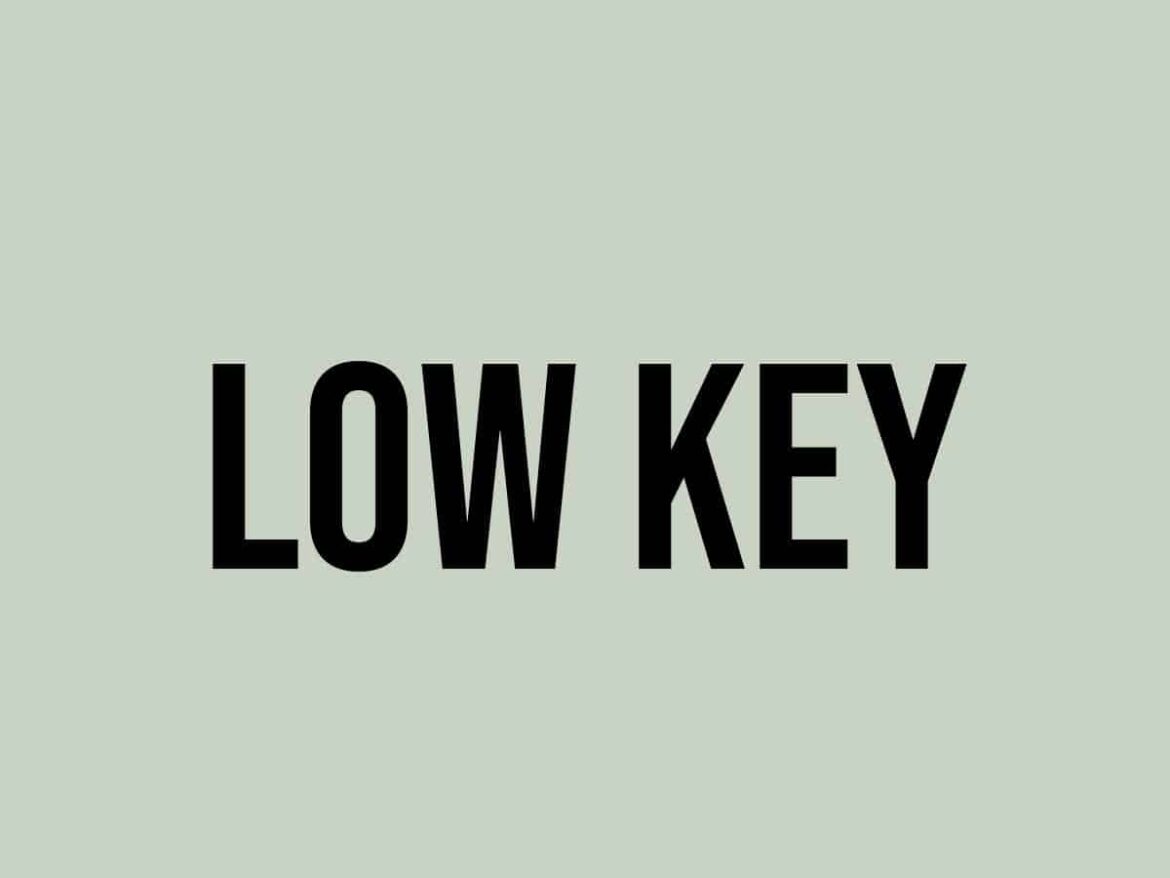2.6K
The word “lowkey” is used regularly, especially in youth language. It describes a subtle, reserved, or unobtrusive way of expressing or doing something. This guide explains the origins and various uses of the term.
The meaning of “lowkey”
Young people use the English word “lowkey” for various purposes that go back to the original meaning of the word.
- Lowkey comes from the English verb “to be low key.” This means to be discreet or reserved.
- The term therefore describes a reserved, subtle or inconspicuous way of saying or doing something. It is about not presenting things loudly or conspicuously, but rather discreetly and modestly.
- That’s what this youth word is all about. For example, if you say, “The movie was lowkey good,” you liked the movie, but you’re not talking about it very enthusiastically. So it’s probably not going to be that person’s favorite movie.
- It can also mean “between us” or “secretly.” An example of this would be “I really like him lowkey.” This statement is not meant to be shouted from the rooftops, but is only intended for the current conversation partner.
- The word “lowkey,” like its opposite “highkey,” is also used in photography, for example, often in nude photography. Low-key photography is a very dark image with a high proportion of black. High-key photography, on the other hand, has a high proportion of white.
How is lowkey used in everyday life?
Lowkey can be used in everyday language in different ways.
- In conversations, lowkey can be used to express feelings or opinions without exaggerating them. This allows people to share their thoughts without coming across as pushy.
- On social media platforms such as Twitter or Instagram, lowkey is often used to make posts or comments appear less direct. Users express their views or emotions in a subtle way.
- In a professional context, lowkey can be helpful when you want to make suggestions or express criticism without coming across as too assertive. This can lead to more pleasant communication.
- Sometimes lowkey is also used ironically to emphasize the opposite, similar to the use of “understatement.” For example, someone might say, “I’m lowkey totally overwhelmed,” to actually express strong enthusiasm.
What are the advantages and disadvantages of using lowkey?
There are both advantages and disadvantages to using the term lowkey.
- One advantage is that lowkey allows you to share opinions and feelings without being intrusive. This can be particularly useful in social situations where restraint is valued.
- Lowkey can help avoid misunderstandings because it encourages a more subtle way of expressing oneself. This can be particularly beneficial in written communication.
- One disadvantage could be that the meaning of lowkey is not always clear and can be interpreted differently depending on the context. This can potentially lead to confusion.
- In addition, frequent use of lowkey could lead to statements being taken less seriously, as they could always be perceived as reserved.
Different perspectives on lowkey
Lowkey can be viewed from different perspectives.
- From a cultural perspective, lowkey is an example of how language use evolves dynamically and integrates new terms from different languages.
- For linguists, the use of lowkey is interesting because it shows how people navigate social hierarchies and interpersonal relationships through language.
- From a psychological perspective, the use of lowkey could indicate a tendency to avoid conflict or conceal one’s own insecurities.
- Finally, one could argue that lowkey is an expression of a trend toward emotionality and subtlety in digital communication, where direct confrontation is often avoided.

